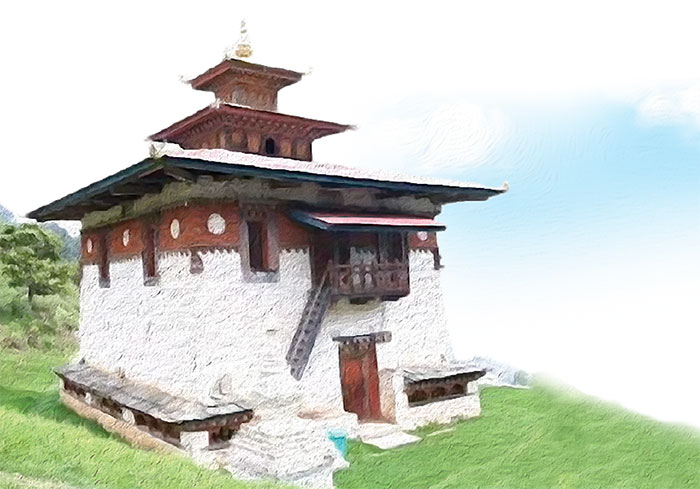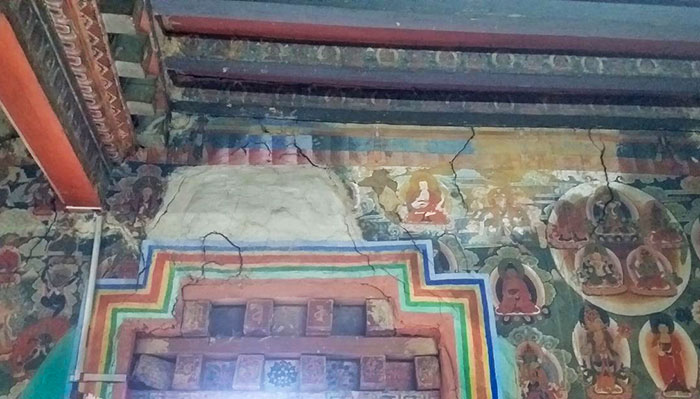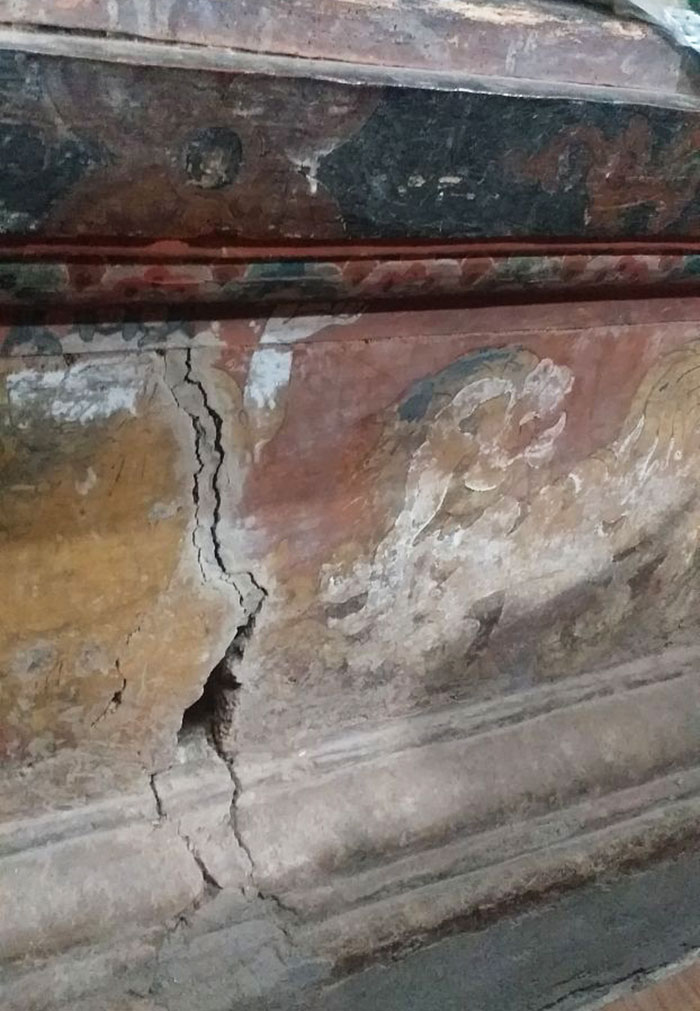
Tshering Namgyal | Mongar
Yakgang Sanga Choeling in Mongar, popularly known as Yakgang lhakhang, which was built in the 16th century by Pema Lingpa’s youngest son, Sangdag, is one of the most iconic religious structures in the country.
It is believed that, when Choekhor Deb tried to open the treasure chest revealed by Pema Lingpa, three statues from the box flew away—one to Jakar dzong, another to Dongkola lhakhang, and a third to Yakgang lhakhang. The lhakhang houses many sacred relics artefacts related to Pema Lingpa.
Yakgang lhakhang, which is known for its rare and precious relics and religious artifacts, such as a statue of the Buddha discovered by Pema Lingpa from Mebartsho, a three-sided phurpa (ritual dagger) discovered by Pema Lingpa from Ugordra in Tibet, the skull of a dakini from Samye Chimphu Nadrak, and a skull of the king of nagas, among several others, has been under the care of Yagang Choeji or the descendants of the Pema Lingpa.
The two-storey lhakhang suffered significant damage due to earthquakes and needs major restoration. The lhakhang’s former lam, Kuenley Gyaltshen, said that the family had been managing the annual three-day Treldha tshechu and other religious events with donations from devotees. The upkeep of the lhakhang, he said, was becoming very costly for the family.
Karma Lhatu, 37, from Phosorong, has not missed a single Yakgang tshechu. “When people receive blessing from the sacred relics, there’s always a light rain, which is considered auspicious.” The people from Phosorong, Ridaza and Jamcholing villages come with their fresh farm produce to offer to the lhakhang during the tshechu.

The lhakhang also houses some ancient armour and masks, musical instruments, weapons, and xylograph blocks. The ground floor of the lhakhang has statues of Buddhas (past, present, and future), Guru Rinpoche, Chenrizig, Terton Pema Lingpa, and Gyapo Lhashang.
Lam Kuenley Gyaltshen said that couples come to ask for either a son or daughter from Gyapo Lhashang. Their prayers are always answered.
Lam Kuenley Gyeltshen said that the family had decided to seek government support to renovate and maintain the lhakhang. Because parts of the lhakhang are crumbling, relics and artefacts are today kept at the owners’ house.

Given its religious and cultural significance, Yakgang tshechu is a unique local festival, which should be preserved and promoted.
Yakgang lhakhang’s funding support was on the agenda from Mongar gewog during the 9th dzongkhag tshogdu (DT). The tshogdu members also proposed that such support was necessary also for other privately owned lhakhangs of historical importance.
Dzongkhag’s culture officer, Rigzin Peldrup, said that there was an urgent need to renovate the lhakhang. He added that there was a risk of losing important historical structures otherwise. “That would mean losing critically important history with it.”
Thromde thuemi, Namgay Dorji, said devotees from all over the country came to visit the lhakhang, especially to attend Yakgang tshechu on the 10th day of the fifth lunar month because of its religious and cultural significance.
Yakgang tshechu, DT members said, could be developed as an important tourism product.
Members of Parliament, who were on constituency visits and attended the DT as observers, suggested exploring funds from other sources, such as Cultural Trust Fund and Tourism Council of Bhutan.
The DT decided to submit the resolution to the Ministry of Home and Cultural Affairs.
“Private lhakhangs are also public property because everyone has access to them. In that sense, support from the government is critically important,” Narang Gup Tandin
Wangchuk, said.

